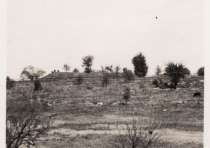
Fortress Rosecrans in Murfreesboro was the largest earthwork fort built during the Civil War. The Union Army used it to protect the Nashville and Chattanooga Railroad which provided support for the Union advance through Tennessee.
Located in Murfreesboro, Fortress Rosecrans was the largest fort built during the Civil War; portions of the huge fortification remain intact today. Constructed between January and June 1863 after the battle of Stones River, the project was the responsibility of Brigadier General James St. Clair Morton, chief engineer for the Army of the Cumberland. The bastioned fort covered an area of approximately 225 acres and consisted of eight lunettes and four redoubts linked by a series of curtain walls and abatis. Numerous buildings (saw mills, quartermaster depots, warehouses, magazines, and quarters) covered the site.
The fortress was placed astride the junction of the Stones River and the Nashville and Chattanooga Railroad as well as the intersection of Wilkinson Pike and the Old Nashville Pike. The fortress, never successfully assaulted by Confederate forces, provided the logistical support for the Union advance on Chattanooga and Atlanta and Sherman's March to the Sea.
Morton began work on the fortifications on January 23, 1863. The Pioneer Brigade, an elite Michigan unit experienced in building railroads and fortifications supervised the labor of the over 40,000 men encamped nearby. Morton also published a lengthy guide for the defense of Fortress Rosecrans.
The construction pace was increased in June 1863 in order to allow the Army of the Cumberland to begin its advance upon Chattanooga. When Major General William S. Rosecrans departed Murfreesboro on June 24, he left behind some 2,000 troops to operate and defend the fortress under the command of Brigadier General Horatio Van Cleve.
After the war, the site reverted to agricultural uses, but the west wall of the fortress and one redoubt have survived. Acquired by the City of Murfreesboro in 1966, the centennial anniversary of the abandonment of the fortress, the property was transferred to the National Park Service in 1993, becoming a unit of Stones River National Battlefield. The fortress is listed on the National Register of Historic Places.
Tools
Key Facts
- Constructed after Stones River to provide logistical support for the Union advance on Chattanooga and Atlanta and Sherman's March to the Sea.
- Never successfully assaulted by Confederates.




